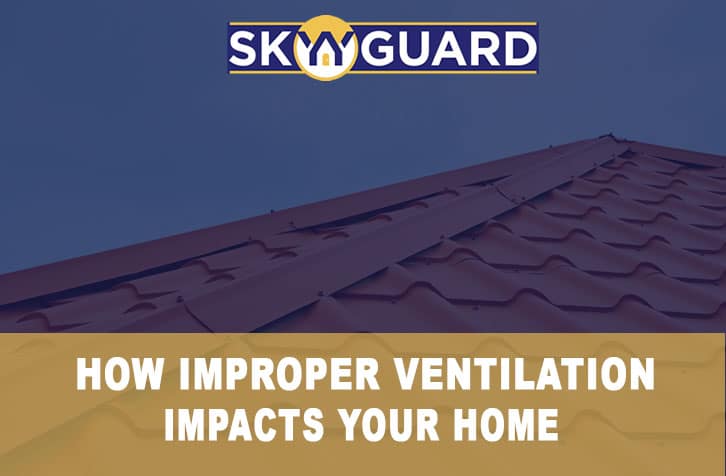You may already know that good air ventilation inside your living spaces impacts comfort, health, and home. Did you know that your unfinished attic needs regular airflow and ventilation for the same reasons? It’s easy to forget about your attic, as far as maintenance and home improvements are concerned, and SKYYGUARD is here with a list of reasons why.
Good Attic Ventilation Has Benefits
First, the good news. Attic ventilation helps your home and your pocketbook in a variety of different ways. Ventilation helps protect your roof, gutters, attic structure and helps save on your energy bill. One of the most noticeable ways ventilation helps is to prevent ice dams. Ice dams occur when temperatures in your attic melt the bottom layer of snow and ice on your roof. The snowmelt runs down the roof and refreezes along the edges (eaves). Ice accumulation on the eaves often damages decking, shingles, and gutters.
During the summer season, poor ventilation causes temperatures to reach extremes. This can wreak havoc on roofing and attic materials, and force heat into your home, creating incredible discomfort as well as higher energy bills.
Signs of Poor Attic Ventilation
When you get the opportunity, take a walk around your home. Inspect the vents to see if they are blocked by insulation, animal nests or other debris. The typical attic ventilation system takes in air at the eaves and pushes air out the top of the attic through the roof or ridge vents.
More telltale signs you have ventilation problems in your attic are high energy bills, stuffy upstairs rooms (summer season) and ice dam development. The most obvious sign is ice dams, or simply if the snow melts first from the middle of your roof rather than the eaves.
Working With Attic Ventilation Contractors
Talk to your roofing contractor about scheduling an attic inspection. During the inspection, your contractor should measure the total square footage of air vents (intake and exhaust) and measure the size of your attic to ensure there are enough vents located in the right places for optimal airflow.
A good ventilation contractor will also look for damage to the roofing system, which indicates attic ventilation problems. If your attic does have ample ventilation, temperature fluctuations could be caused by inadequate insulation and/or air leaks through the attic floor and living spaces. All these potential problems should be addressed during the inspection.
Talk to your roof and attic ventilation contractor to boost comfort, energy savings, and home health right away. For the best results, contact SKYYGUARD today!

